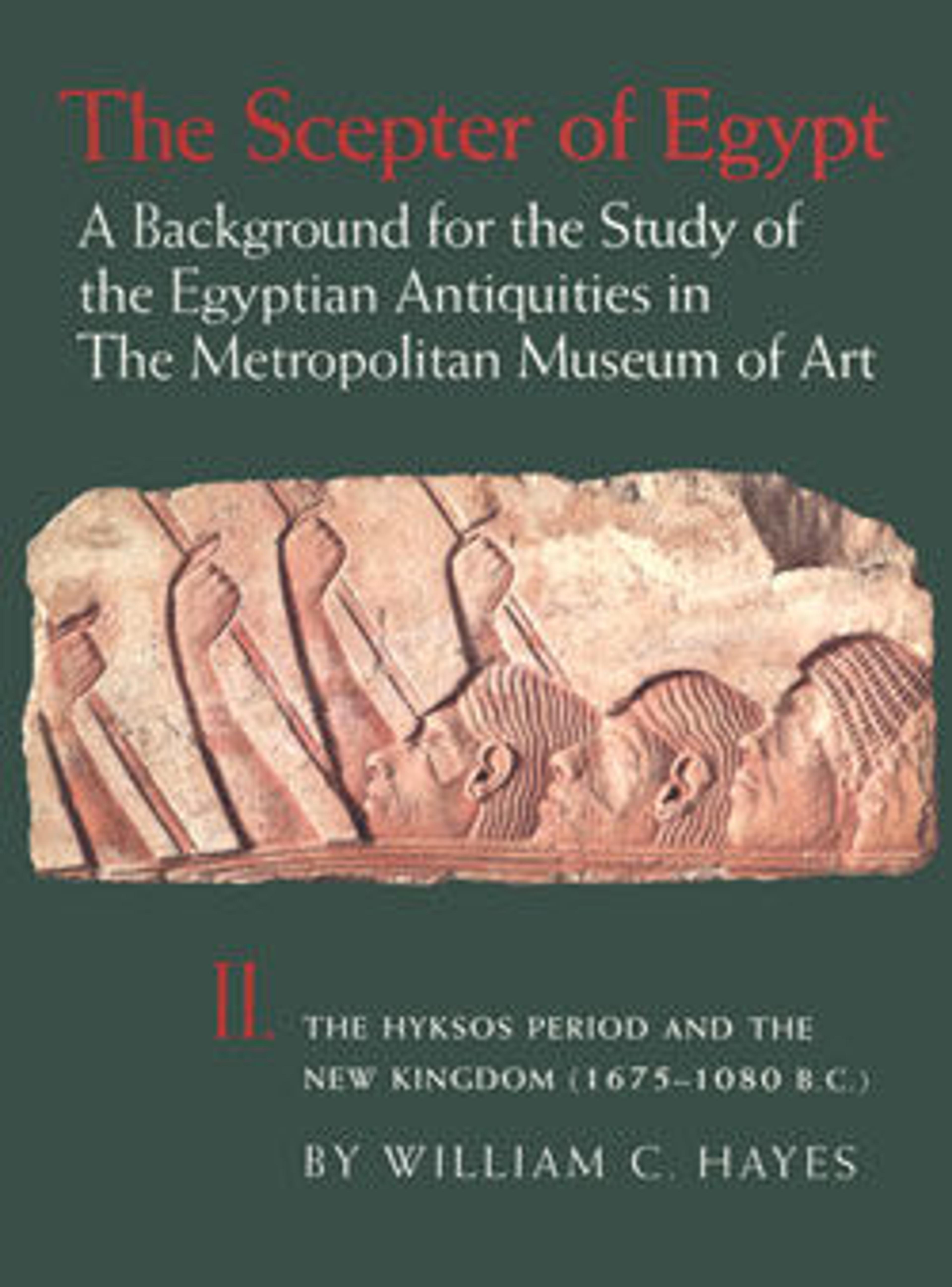Ax
The blade of this battle ax is among the earliest examples of its kind. It was found in the coffin of “the overseer Khay,” presumably a military official. The handle was made from a branch or tree trunk chosen for its curvature. The flared end is a separate piece of wood, mounted with its grain direction perpendicular to that of the shaft. This method of construction would have preserved precious raw materials and cut down on labor. It is unclear how the two surviving pieces were originally joined and whether the modern, intermediate element was added to replace a component that did not survive or to compensate for disproportionate shrinkage of the wood shaft and terminal during burial. The leather lashing attaching the blade to the handle had disintegrated and was restored based on other, better preserved examples.
Artwork Details
- Title:Ax
- Period:Second Intermediate Period–Early New Kingdom
- Dynasty:Dynasty 17–Early Dynasty 18
- Date:ca. 1635–1458 B.C.
- Geography:From Egypt, Upper Egypt, Thebes, Asasif, Courtyard CC 41, Pit 2, Burial D 3, In coffin, MMA excavations, 1915–16
- Medium:Copper alloy, Wood, leather (modern)
- Dimensions:L. of axe: 54.5 cm (21 7/16 in); L. of axe blade: 14.4 cm (5 11/16 in)
- Credit Line:Rogers Fund, 1916
- Object Number:16.10.403a–c
- Curatorial Department: Egyptian Art
More Artwork
Research Resources
The Met provides unparalleled resources for research and welcomes an international community of students and scholars. The Met's Open Access API is where creators and researchers can connect to the The Met collection. Open Access data and public domain images are available for unrestricted commercial and noncommercial use without permission or fee.
To request images under copyright and other restrictions, please use this Image Request form.
Feedback
We continue to research and examine historical and cultural context for objects in The Met collection. If you have comments or questions about this object record, please contact us using the form below. The Museum looks forward to receiving your comments.
